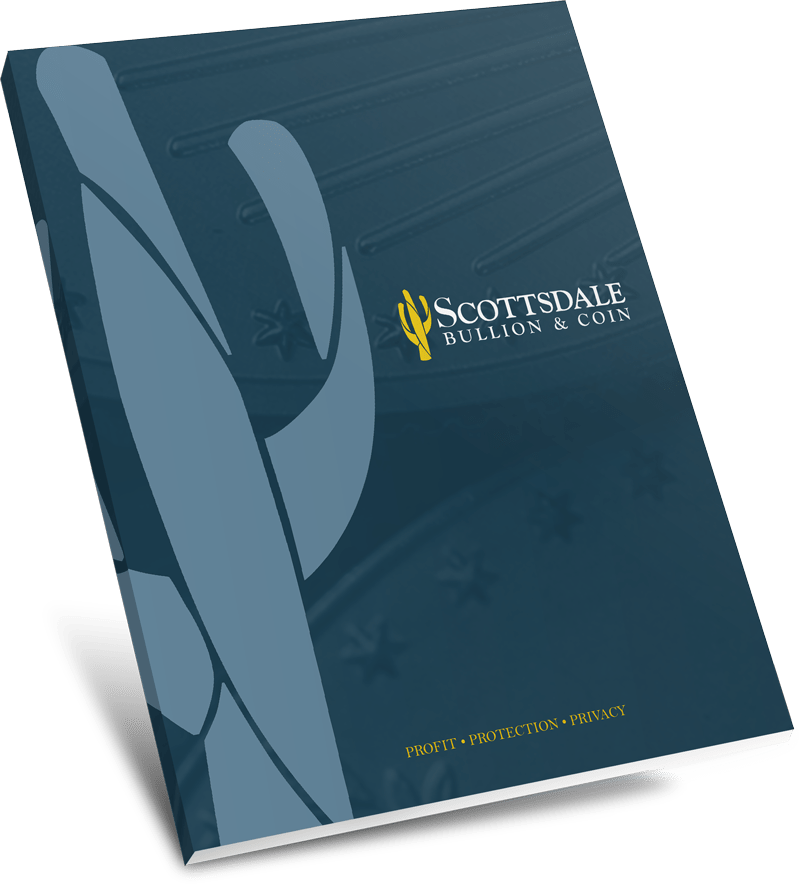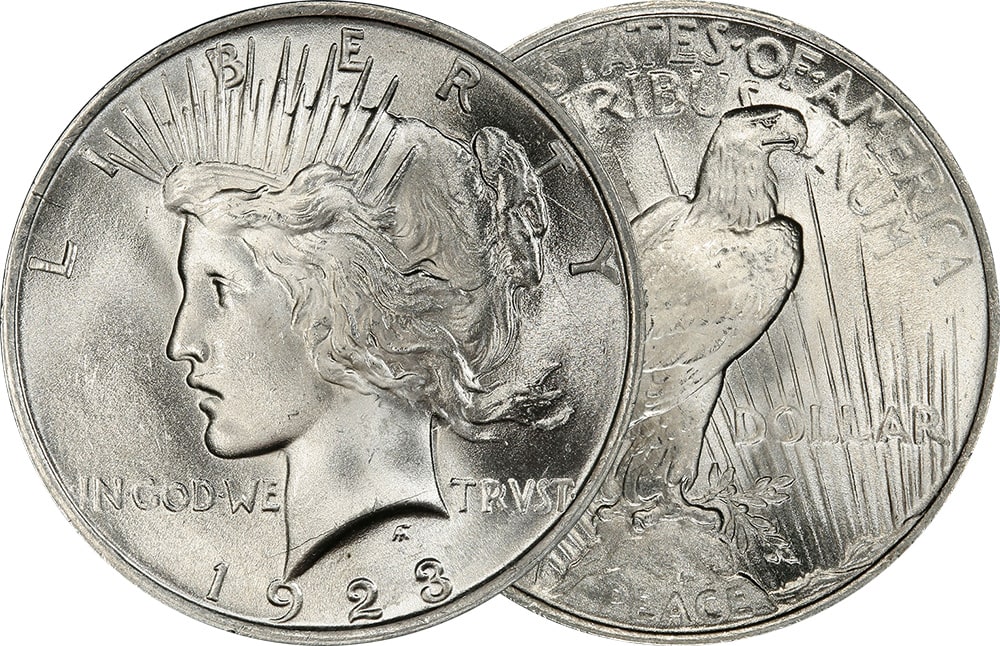
U.S. Peace Dollar Coins
Looking to sell this coin? Get cash today! Request free appraisal.
| Purity | .900 Silver (1921–1935) |
| Brand | U.S. Mint |
| Condition | Graded & Nongraded |
| Finish | Circulated & Uncirculated |
Looking to sell this coin? Get cash today! Request free appraisal.
Why Buy from Scottsdale Bullion & Coin
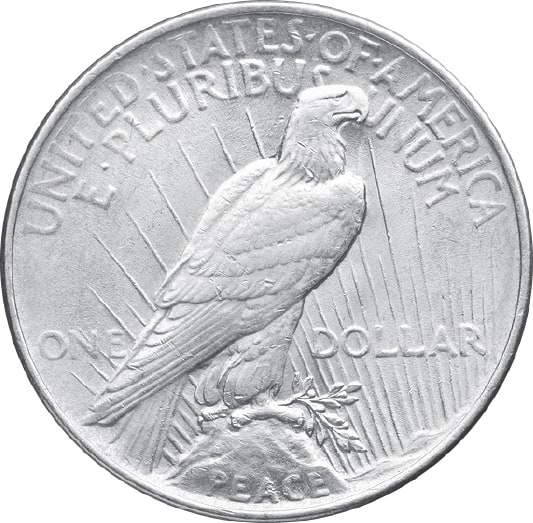
About the U.S. Peace Dollar Coin
The Peace dollar is a silver U.S. coin that was minted from 1921 to 1928, and then again from 1934 to 1935. The Pittman Act required the U.S. Mint to strike millions of silver dollars. Initially the Peace dollar was supposed to carry the design of the Morgan dollar (which had been discontinued in 1921), but numismatics successfully persuaded the government to use a novel design commemorating the peace following World War I. The U.S. Mint struck over a million Peace dollar coins in 1921. Its production first ended in 1928 when the Pittman Act requirements were met but continued in 1934 and 1935 due to other legislation. It was, in fact, the last silver coin to be produced for circulation in the U.S.
U.S. Introduces New Silver Dollars
During World War I, Germany sought to destabilize the British Empire by spreading rumors that Britain was unable to redeem for silver all of the paper money they had printed. Consequently, the British asked their ally, the United States, to buy silver to increase the supply and lower the price. As a result, Congress passed the Pittman Act in 1918 which authorized the U.S. to sell metal to the British government up to 350, 000, 000 silver dollars at $1 per ounce of silver. In 1920, numismatist Farran Zerbe called for the issuance of a coin to celebrate peace at the American Numismatic Association (ANA) in Chicago.
Re-Design of the Silver Dollar
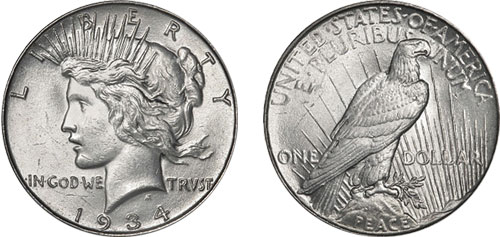
In the following year, despite Congress’ initial rejection of a redesign, the U.S. Commission of Fine Arts held a competition for the design of the peace coin. In fact, since the Morgan dollar had been struck for more than 25 years, it was eligible for replacement at the discretion of the Secretary of the Treasury. Then, after President Harding declared the end of the war with Germany, the competing sculptors to use the head of Liberty on the obverse side, and an eagle on the reverse side. After considerable discussion among Fraser, Moore, and Herbert Adams (a sculptor and former member of the Commission), a design by Anthony de Francisci was selected unanimously.
Little Circulation Nationwide
The Peace dollar underwent multiple modifications. In 1922, the Mint discovered that the dies broke rapidly due to the coin’s high relief. As a result, de Francisci modified the design to reduce the relief of the Peace dollar. The mints in Denver, San Francisco, and Philadelphia produced 84 million coins in 1922 alone. The Peace dollar circulated mainly in the Western United States, where coins were preferred over paper money, and saw little circulation elsewhere. They were also deposited in vaults as bank reserves and obtained from banks as Christmas presents. Another seven million pieces were struck in 1934 and 1935 owing to a further congressional act requiring the Mint to buy large quantities of silver whose price at the time was very low.
Efforts to Boost Silver Dollar Circulation
In 1964, Congress decided to pass legislation that would have the Mint strike 45, 000, 000 silver dollars as coins had become rare due to hoarding (the price of silver had risen so much that the silver dollar was more worth as bullion than as currency). However, since they were offered for $7.50 a piece (so they would not circulate), the public and many congressmen objected. Thus, Mint Director Eva Adams quickly announced that they were trial strikes which were never intended for circulation. The Mint later declared that 316,076 coins had been produced; all were reported melted under heavy security. No 1964-D Peace dollars are known to exist in either public or private hands. In 1970, some experimental silver pieces were struck to honor President Eisenhower who had died the previous year. This “Eisenhower dollar” did not contain any precious metals, although some coins produced for collectors included 40% silver.
How to Buy the U.S. Peace Dollar Coin
If you’re in Arizona, you can walk into our office during business hours to buy. You can also call in to place an order, use our live chat function, or request a quote directly from our website.
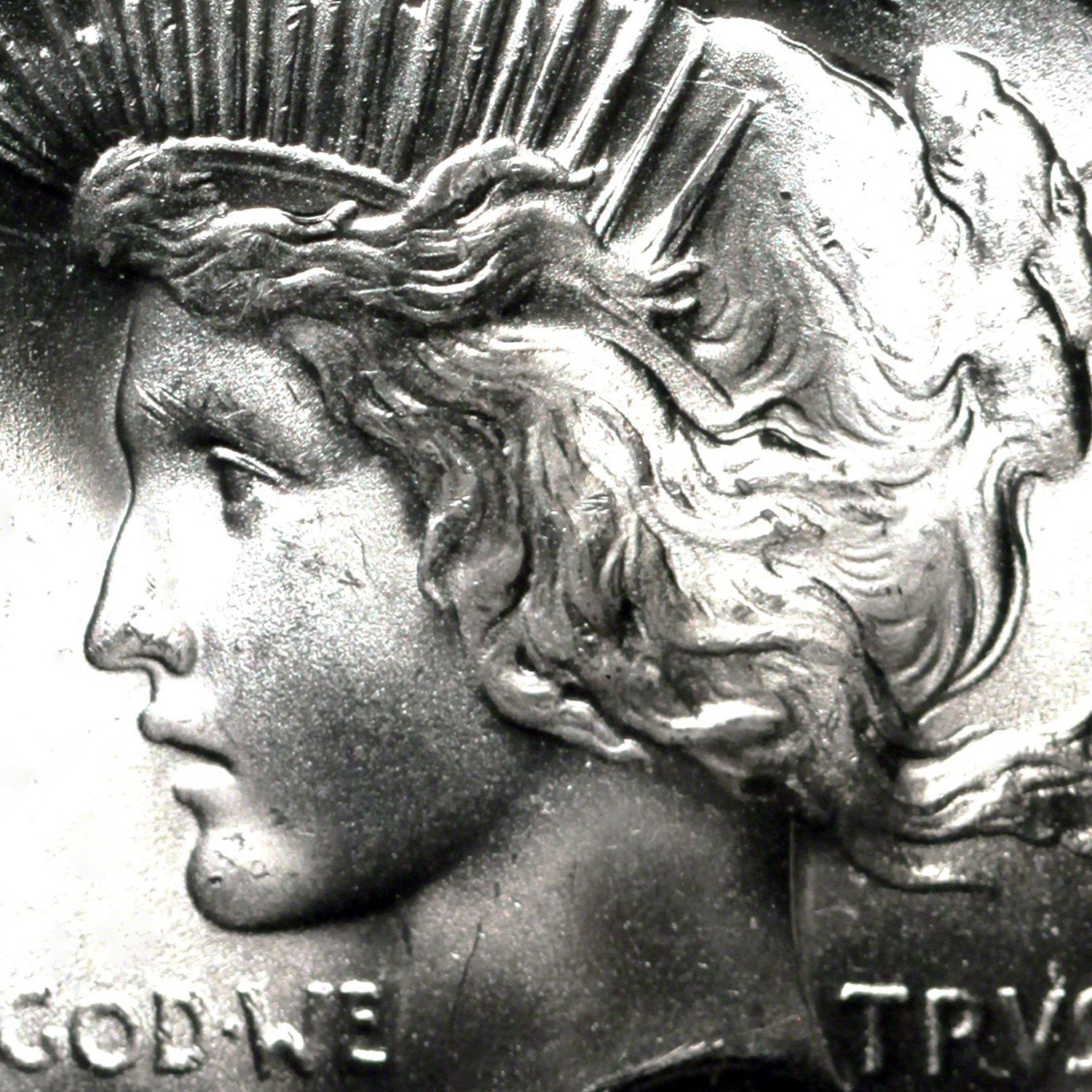
Why Invest in the U.S. Peace Dollar Coin
Stability
Steady price action supported by inherent value.
Growth
Promising growth potential for optimal gains.
Privacy
100% private with no 1099 tax reporting.
Bartering
Ideal for trading goods and services in certain situations.
Considering the benefits of adding the U.S. Peace Dollar Coin to your portfolio? Schedule a free strategy session with a precious metals advisor to discuss your options and goals.
U.S. Peace Dollar Coin Design
Obverse Side
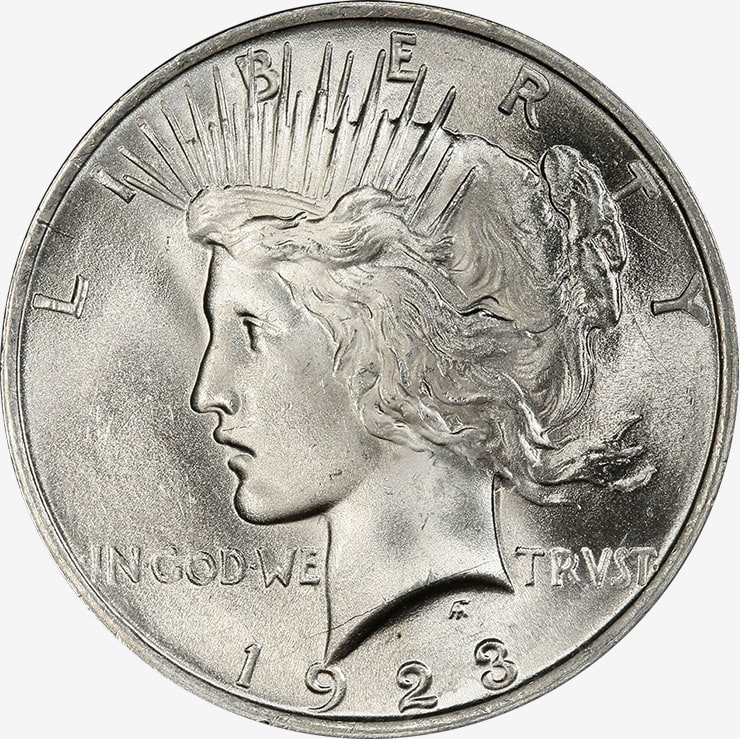
The obverse design of the Peace dollar features the profile of Liberty, based on a picture of de Francisci’s wife, wearing a radiate crown and with her hair flowing in the wind. Moreover, it depicts the inscriptions “LIBERTY” and “IN GOD WE TRUST,” as well as the mint date.
Reverse Side
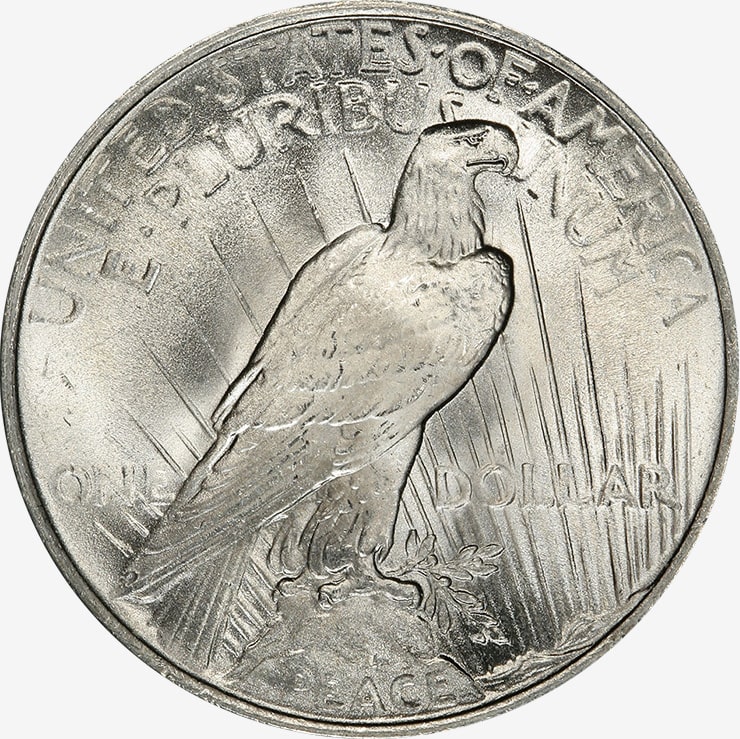
The reverse side features the engravings “UNITED STATES OF AMERICA,” “E PLURIBUS UNUM,” and “PEACE,” as well as the denomination. De Francisci originally submitted two reverse designs: one with a warlike eagle that is aggressively breaking a sword, and another one with a resting eagle that is holding an olive branch. The Committee chose the latter, but sought to include the broken sword. However, the American public and press were not pleased with the symbolism of a broken sword in the wake of WWI, so the Commission quickly approved the deletion of the sword from the Peace dollar’s design.
U.S. Peace Dollar Coin Specifications
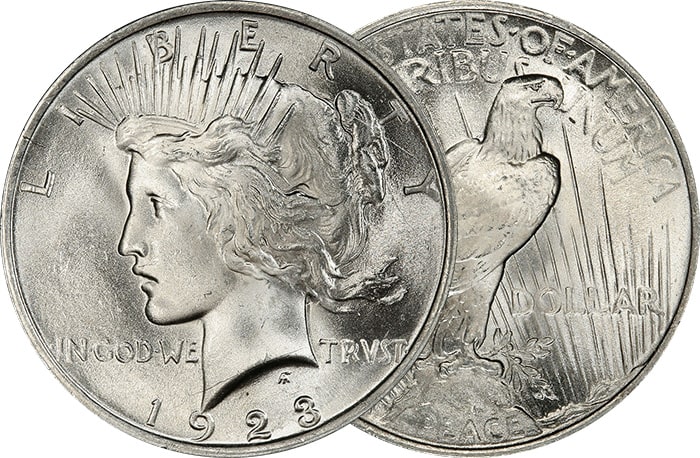
U.S. Peace Dollar
| Versions | Circulated & Uncirculated |
| Diameter | 38.1 mm |
| Thickness | 2.4 mm |
| Net fine weight | 0.7734 ozt |
| Weight | 26.73 g |
| Face Value | $1 |
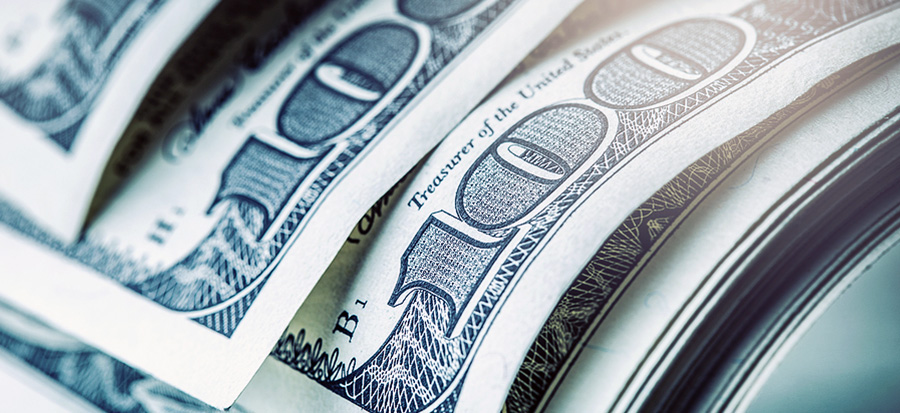
U.S. Peace Dollar Coin Value
The peace silver dollar value can vary. Since none of the Peace dollar’s mintages are particularly rare, their worth is just a little above that of the coin’s bullion value. Two exceptions are the first year of issue 1921 Peace dollar, minted only at the Philadelphia mint and issued in high relief, and the low-mintage 1928-P Peace dollar. Yet, they are popular among collectors because the coins were minted only for a short span of years. As they are only a few rare mint years, the condition of the coin is a very important factor regarding its value. The uncirculated coin is the most desirable Peace dollar and can yield quite a large profit.

